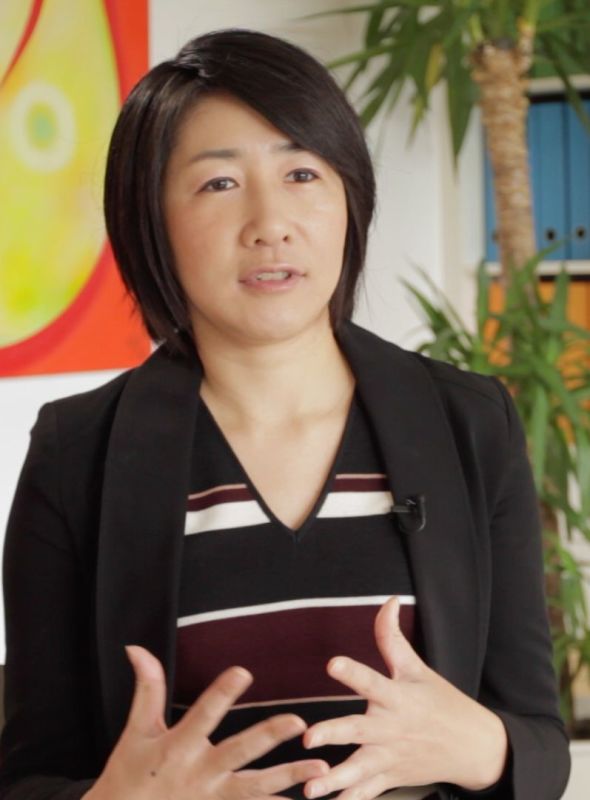 EGAKU is about painting myself, it’s 100% personal
EGAKU is about painting myself, it’s 100% personal
I’m a researcher at a consulting firm. I conduct research and analyses based on consultants’ ideas, figuring out how to put together documents for clients which communicates the necessary information in a clear, accessible way. It’s about doing my best to communicate in a straightforward, logical way without letting my personal views come into the picture.
In contrast, EGAKU is personal. It’s all about painting myself and my thoughts. There’s really no set framework besides a few things like the size of the paper you paint on, and the color of the paper. I remember thinking how this incredible freedom of self-expression you experience in EGAKU - starting with the freedom to create your own colors – is really the opposite of what I’ve experienced until now at work.
EGAKU is like a mental workout
As we become adults, I feel we spend more and more of our time being an intermediary, expressing other people’s ideas rather than our own. So when I try to articulate my thoughts in EGAKU, those 45 minutes I spend painting feels desperately short. I have to make a conscious effort to observe my thoughts just to figure out what’s going on inside my head, so when I try to put pastel to paper my hands freeze. I think many people start painting without really knowing what their goal is, but I just couldn't do that and that made me feel even more nervous.
In every EGAKU session there’s a set theme we explore and paint. There’s so much to think about: What are my thoughts about this theme? How do I want to paint this? And then you have to actually paint the picture. It’s intense. Every session feels like a mental workout.
The wonder of art as a judgment free zone
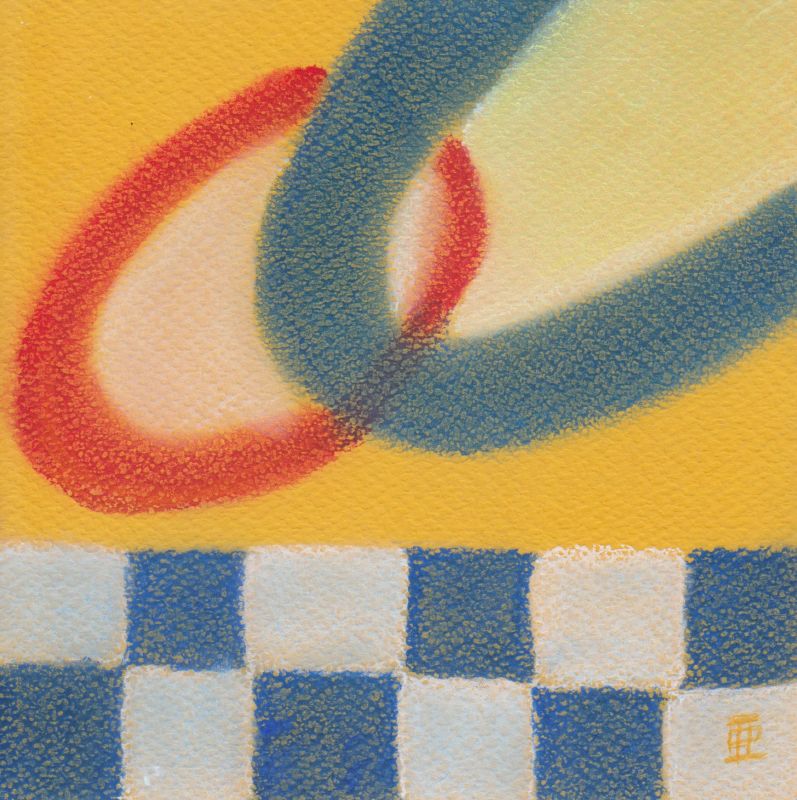 There’s always a part of me that wants to change myself. When I was painting my picture, 「夢を掴む」 (“Making dreams come true”) on the theme of “This year’s me” I was expressing a wish to make something happen. I painted a picture depicting various things piling up – building from the ground up. I thought that as long as I’m making steady progress on the right path I’ll eventually get there and my dreams will come true. But sometimes you need to take a leap forward. In life I think there’s always an element of random chance, so I drew an elastic band representing a wildcard that might help you make that jump.
There’s always a part of me that wants to change myself. When I was painting my picture, 「夢を掴む」 (“Making dreams come true”) on the theme of “This year’s me” I was expressing a wish to make something happen. I painted a picture depicting various things piling up – building from the ground up. I thought that as long as I’m making steady progress on the right path I’ll eventually get there and my dreams will come true. But sometimes you need to take a leap forward. In life I think there’s always an element of random chance, so I drew an elastic band representing a wildcard that might help you make that jump.
Then as we were sharing our works towards the end of the session, one participant commented, “I guess you can make the jump precisely because of everything you’ve built up till this point.” They actually had a point. If there was nothing in the bottom half of the picture, I wouldn't be able to reach the elastic band, but because I have all this I’ve built up to this point I can reach it. It was an amazing feeling to have someone see this kind of positive meaning in my picture.
In EGAKU you always have other people looking at and responding to your work so it really keeps you on your toes. It’s actually one of the things I really enjoy about the experience. Moreover, you never feel judged or ignored. It’s strange because even when other people say things you never intended, you never feel contradicted or undermined by their comments. I think this is the incredible thing about art.
Shifting away from a literal approach to the theme helped me find my inner voice
At the beginning I was painting pictures so that other people would understand me. I’d think about the best expression or choice of words to make myself understood. That’s how I approach work and other aspects of my life. Most of the time I’d look at the theme and take a literal approach - first trying to define the theme in words, and then painting that definition. When I tried to be faithful to the theme and paint my thoughts accordingly, I found that using shapes seemed to work pretty well.
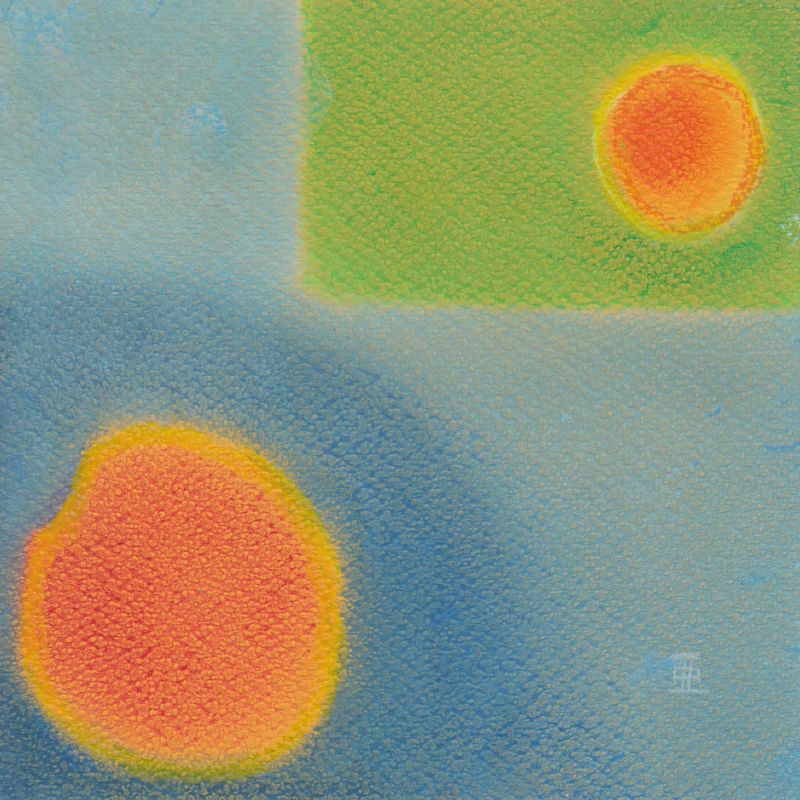 But as I continued my practice, this started to change. By the end of the TOTSUKITOKA course, I started painting without the need to define the theme in words, or even a vague image of what I wanted to express. When I finally finished painting, I’d often wonder, “Ok, so what do we have here?”
But as I continued my practice, this started to change. By the end of the TOTSUKITOKA course, I started painting without the need to define the theme in words, or even a vague image of what I wanted to express. When I finally finished painting, I’d often wonder, “Ok, so what do we have here?”
That’s particularly the case with this last picture,「種志」(“Seed of Hope”). When I was done with it I remember thinking, “Wow! That’s quite something!” While I was painting it, it felt like I was never going to finish that piece. I really didn’t know where I was going with it. But now looking back on it, I realize that the picture was just a reflection of my true self. If I’d taken a more literal approach I think other people could come up with something similar. But this is unique. I haven’t really changed since I painted my first picture - the way I look, who I am inside - and so it was an odd feeling to see my true self emerge so distinctly in my art.
By focusing on myself, it’s freed me from comparing myself with other people
Both inside and outside work I have a habit of immediately comparing myself with other people. I’m always thinking, “How can I stand above the crowd?” “What am I worth?” At times when I feel overwhelmed by these thoughts at work and in my personal life, it can be pretty depressing.
But by giving me the space to explore who I am and my self-expression, EGAKU has actually helped me step out of this mindset. EGAKU is about focusing on myself – just as I am. It’s got nothing to do with haves or have nots. Even if I feel I could have come up with something much better, there might be that one person who says they really like it as it is. I think it's rare to have that kind of experience.
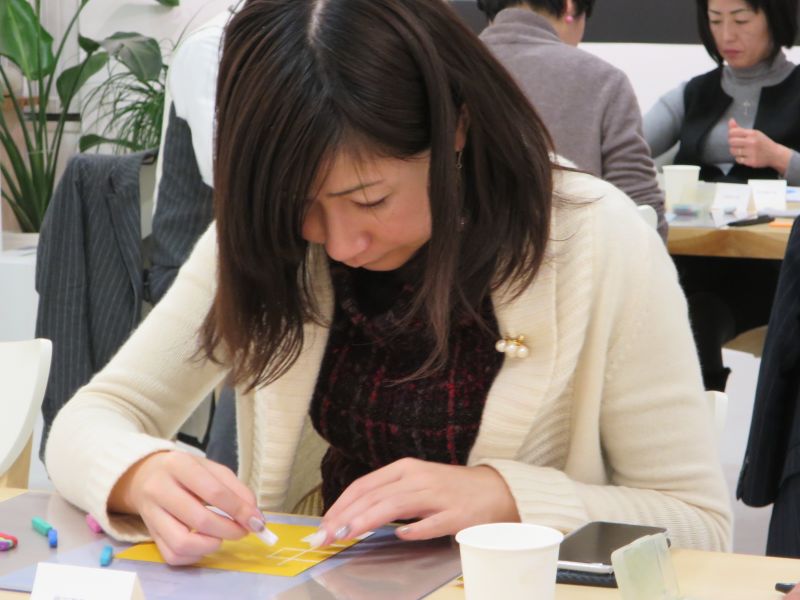 At work there are times when the message doesn't get through, but with art it doesn't matter. In fact it’s the opposite of what happens at work. With art even if people looking at my picture see something different to what I intended, I see their comments as just some of the many possible interpretations and this attitude creates a positive cycle. It’s an incredibly uplifting experience.
At work there are times when the message doesn't get through, but with art it doesn't matter. In fact it’s the opposite of what happens at work. With art even if people looking at my picture see something different to what I intended, I see their comments as just some of the many possible interpretations and this attitude creates a positive cycle. It’s an incredibly uplifting experience.
Nowadays, even if I feel ignored or frustrated at work, I think I have more perspective and I can take it in my stride.
In EGAKU you express your thoughts so there’s no need to compare yourself with others, and there’s no such thing as making a mistake. Perhaps it’s stating the obvious, but we’ll all different. I think it would be wonderful to have this kind of tolerance for differences in the workplace as well, but perhaps we lack the emotional bandwidth to do so.
My life is 95% work. I’m constantly making unhealthy comparisons, so coming here once a month is a great way to center myself. I know I have plenty to work on, so I hope to continue the practice. When I come here, I can see how much effort and energy I spend stuck in a competitive mindset.
Work and EGAKU – two sides of the same coin
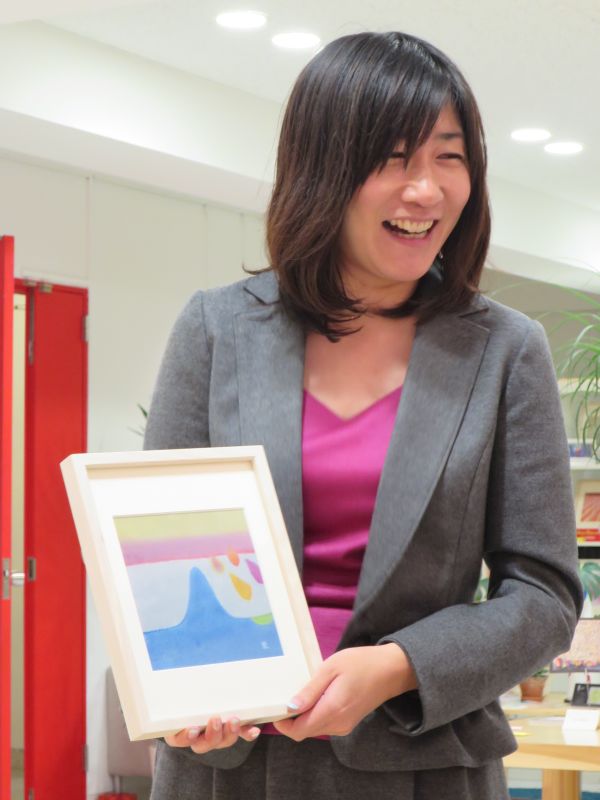 The themes we’re presented with in EGAKU are things we don’t really have the chance to consider in a work context. Take ‘Growth’ for example, it’s a theme which can include work, but we’re challenged to think about what ‘growth’ means to us personally, and paint our explorations of personal meaning.
The themes we’re presented with in EGAKU are things we don’t really have the chance to consider in a work context. Take ‘Growth’ for example, it’s a theme which can include work, but we’re challenged to think about what ‘growth’ means to us personally, and paint our explorations of personal meaning.
Although EGAKU and work are two separate worlds, painting is really like a workout and every time I take part in a session I feel EGAKU helps me work through all these ideas I have at work. They’re polar opposites in one sense but in another sense they’re just two sides of the same coin.
I feel the same about work and my daily life. In some senses they’re poles apart, but in other respects they’re really not so different. Work is just a part of life, and life is just a part of work. Work is a way of making a living, but it’s also about engaging with other people.
Before I discovered EGAKU, I imagined work as being at my core, at the center of my being, and life was like ivy wrapped around this core as it might a tree trunk. That’s how I imagined myself. But now I feel both the tree and the ivy have grown, becoming stronger, and I can see that I’m more than the tree - it’s all me.
*This article is a translation of the original Japanese interview.